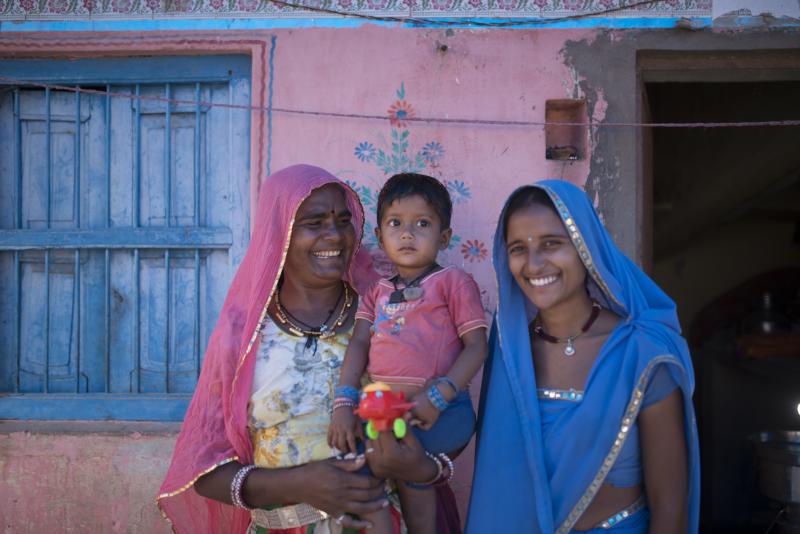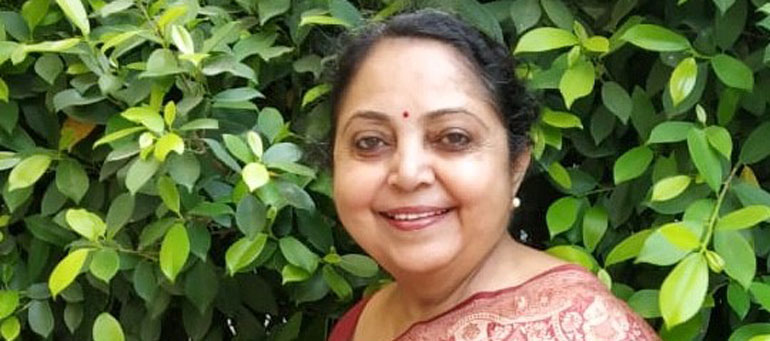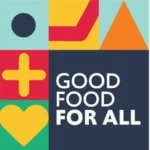
In this Q&A, we introduce a snapshot of GAIN India and the current situation within the country. GAIN India Head of Programmes Deepti Gulati shares her experiences after the ASSOCHAM (the Associated Chamber of Commerce and Industry of India) honoured her with their Outstanding Ambassador of Nutrition and Food Fortification award.
The ASSOCHAM has awarded you their “Outstanding Ambassador of Nutrition and Food Fortification”. What does this really mean to you and to your 40+ years of service to the field of nutrition?
I am very proud, and honoured, yet humbled to receive this award. It is very special, because it comes from one of the top industry associations in India. I have also received other awards, including the recent ‘Outstanding Alumni Achievement Award from the prestigious MS University of Baroda, India and ‘Nutrition Leadership Award from IIHMR University, Rajasthan, India’. All of these constitute an important recognition from academia/ research institutes of GAIN’s work. It is quite exhilarating.
Our excellent teamwork, strong partnerships, diligence, persistence, and smart advocacy has enabled 467 industry partners to voluntarily adopt staple food fortification as their industry norm.
Today, our efforts are now helping to bring fortified edible oil, milk and wheat flour to more than 891 million people.Besides benefitting consumers, we have helped position the food industry as a socially responsible sector that cares for its consumers. Because of our collective efforts in trying to make good food for all increasingly more accessible, the food industry in India is now directly alleviating micronutrient malnutrition—without passing on the additional cost to the consumer.
Micronutrient malnutrition is the lack of essential vitamins and minerals required for healthy growth, development and functioning, and affects an estimated 2 billion people globally. Examples of fortified foods include: vitamin A fortified cooking oil, flour fortified with iron, folic acid and zinc, and iodized salt.
What brought you to focus on food systems, food security, public health along with nutrition and to GAIN in particular? Can you relate a specific anecdote or turning point, which made you decide to go into this field?
Prior to joining GAIN, I was working with the World Food Programme (WFP). During my tenure, I collaborated on two projects with GAIN and had the opportunity to directly experience the organization’s extremely positive work culture and camaraderie—a rarity in most organisations.
Besides the positive work environment, most of GAIN’s work involves working on challenging projects that are implemented at scale and are designed to reach the most impoverished populations to improve their health. This was my biggest motivation—one that is aligned with my personal vision and mission.

What brought you to focus on food systems, food security, public health along with nutrition and to GAIN in particular? Can you relate a specific anecdote or turning point, which made you decide to go into this field?
Prior to joining GAIN, I was working with the World Food Programme (WFP). During my tenure, I collaborated on two projects with GAIN and had the opportunity to directly experience the organization’s extremely positive work culture and camaraderie—a rarity in most organisations.
Besides the positive work environment, most of GAIN’s work involves working on challenging projects that are implemented at scale and are designed to reach the most impoverished populations to improve their health. This was my biggest motivation—one that is aligned with my personal vision and mission.
In all your years of working in nutrition and food security, is there a particular moment you feel proud of? What did this moment mean to you and to populations across India?
There have been several moments that have made me feel very proud, particularly when I led a project that focused on Community-based Management of Acute Malnutrition (CMAM). Witnessing severely malnourished children recover and thrive is—well— truly amazing. There were a few children that I personally followed because I was not sure if they would survive. Nothing could be more magical than helping a two-year-old child weighing just over three kg recover and gain weight to become a seven kg healthy, smiling, happy toddler.
Food fortification is no less miraculous: During one of my chats with village women, I asked them if they had noticed any health benefits of flour fortification. It was so beautiful when they told me, “now, my body does not ache or cause pain”. But the most heart-touching response was, “my children have started loving me more because now I can play with them and do not get angry or irritated… this is because I have more strength and don’t suffer from extreme fatigue and body ache anymore . . . ” Fortifying wheat flour with iron, folic acid and vitamin B12, was indeed making a difference.
Most of all, I feel very happy, proud and blessed to enjoy the immense support from my family. In 2001, an earthquake badly hit India and left us with a heavy toll of about 20,000 dead, more than 60,000 injured, 200,000 people homeless, financial losses and property destruction. My family’s support was for real: “Mom people there need you more than we do. Don’t worry about us. We will manage. Besides, we are proud that you are driven by such noble sense of duty to alleviate the plight of those in dire situations.” Of course, filled with such assurances only prompted me to go out and excel in what I do as much as I could.

What do you wish for the future generations in your country to overcome?
I have been working for 42+ years and field work has always been an integral part of all my career. I have seen hunger and malnutrition—especially in children and women—from very close quarters and know first-hand what it means to go hungry for days.
I have worked to rehabilitate severely malnourished children—thousands who are just skin and bones; children who have become blind in one or both eyes due to vitamin A deficiency; and those with bow-legs and knock-knees owing to vitamin D and calcium deficiencies. Believe me, it is very heart-wrenching: especially when we know that these conditions are so easily preventable.
I look forward to a future where no child will ever go to bed hungry and or suffer from debilitating vitamin and mineral deficiencies. I’m committed to do my best and to contribute to the fight against hunger with all of my might and passion.
How would you change the mind of someone who does not see the urgency of tackling problems around food systems and food security? What would you say to them?
COVID-19 has highlighted the absolute necessity of improving immunity: and the fastest and most efficient way to do so is through quality nutrition and food fortification. The media has done a good job of covering the critical role of micronutrients—especially of vitamin A and D. GAIN is now using this as an opportunity to spark industry interest in fortifying milk and edible oil so that they can position their brand as, “enriched with vitamin A and D: the Immunity Boosters”. This is working and several industry partners who were previously reluctant are now joining to offer the public this very important nutrition intervention.
For many years you have worked hand-in-hand with different stakeholders. What has changed since you first began working in this field?
Building mutual trust among all stakeholders involved in food fortification has been very challenging. Government departments and the food industry are important stakeholders and play a very meaningful role in scaling-up food fortification programmes in India. There is certainly a need for them to collaborate, but it is not always easy to engage them collectively to work on nutrition and health agendas.
Motivating the industry to adopt food fortification as an industry norm requires immense perseverance. In the absence of a demand for fortified food products, the food industry does not consider fortification of staples/food products “attractive”, either financially or commercially.
Today, we’re transforming the industry as we position food fortification as “value added” for their products, and a practice that makes their industry look good in the eyes of the consumer, while becoming more responsible towards their social and national obligations. This is working well and is offering food corporations an incentive to continue their good work—which could be why ASSOCHAM has recognized our work.
What is your key takeaway message to our readers?
Staple food fortification has a great potential to enrich food and improve the lives of millions of children by giving them a healthy start in life. Access to nutritional foods is a basic human right, which all children rightly deserve. Fortified foods and good nutrition are equally critical and important for adult health and well-being.
But these still represent an unfinished agenda. We need to join hands to adopt food fortification and other healthy nutritional practices and habits to ensure good health and improved quality of life for all!
About the author
Deepti Gulati with a rich work-experience of 42 years, is leading GAIN-India’s nutrition and food fortification agenda. Her effective policy-advocacy & efforts to build food-industry’s capacity for fortification has resulted in fortified staplesreaching over 890 million people
She has received “Outstanding Ambassador of Nutrition and Food Fortification Award”, 2020, from ASSOCHAM, “Nutrition Leadership Award” 2019, from IIHMR University, and “Outstanding Alumni Achievement Award” 2018 from MS University of Baroda, Gujarat.






